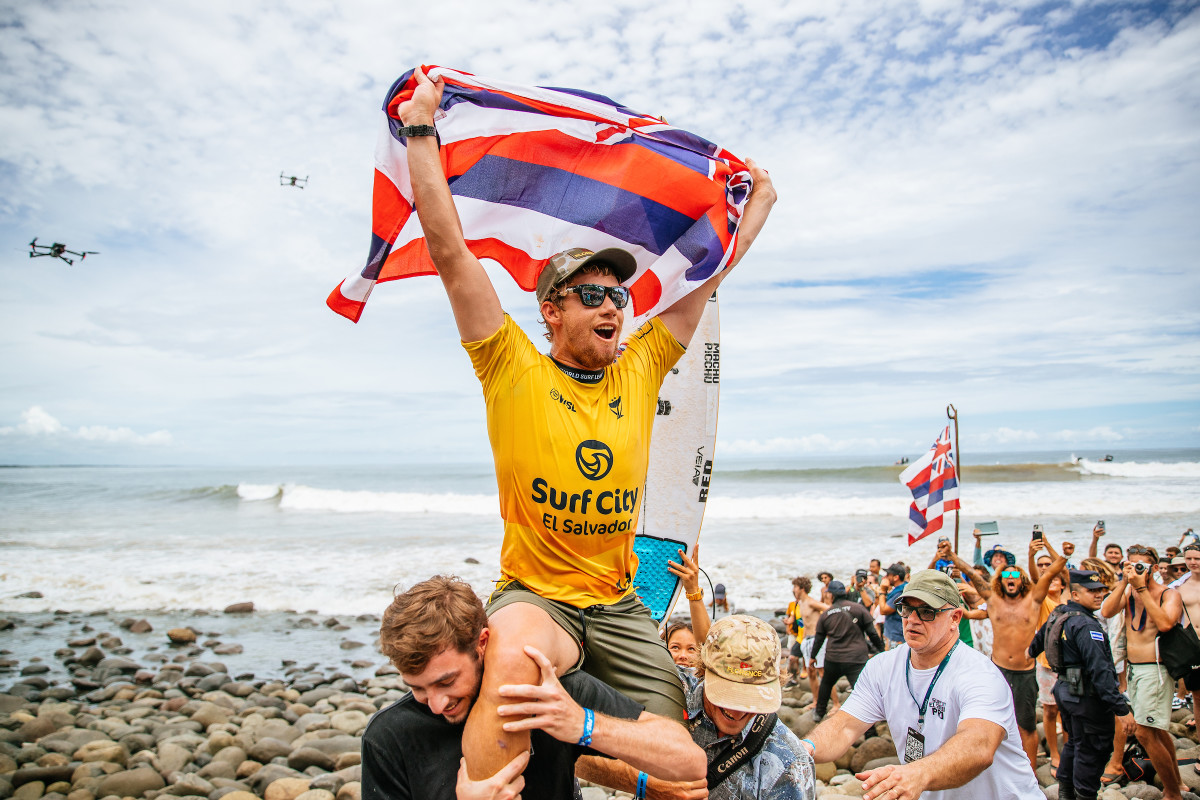
Aaron Hughes/WSL
Third times a charm. After two lackluster events at Punta Roca, the Surf City El Salvador finally shined, serving up the highest of high performance canvases to keep the mojo flowing for the WSL on the back of an all-time Tahiti Pro last month. The forecasted onshore winds stayed away, leaving behind groomed, glassy four-to-six foot lines that wrapped and bowled down the point at Punta Roca – and what an exhibition of high performance pointbreak surfing it provided.
Since Gabriel Medina defeated Joel Parkinson at pumping Snapper back in 2014, Brazilian goofy footers have forced their way into the conversation at any right point.
At the El Salvador Pro, the three-time world champ from Maresias led the charge once again, getting the better of fellow goofyfoot threat and countrymen, Italo Ferreira, in their opening heat, before getting the nod over Australian goofyfoot, Ryan Callinan in the round of 16, and dominating Brazilian regular foot Joao Chianca, in the quarters.
With John Florence butchering lips, cleaving faces in half, and spinning through the air on his way to a perfect ten along with countless excellent rides on the other side of the draw, the surfing world once again held its breath in anticipation of a high performance sequel to Florence and Medina’s Tahitian semi-final tube shootout. But then something a little bit crazy happened.
Related: Watch: John John Florence Launches into Outer Space for a Perfect 10
Medina was on the glass waiting for his post-heat interview to begin when his fellow countryman Yago Dora raced down the line and stuck the biggest, butteriest of backside full rotation air reverses, followed by a pair of snaps for a (very conservatively judged) 7.67. Medina had grabbed his head in shock as Yago rode out of the lofty punt, knowing better than most that when Yago hits this kind of form he’s close to unbeatable.
A standout on Tour last year, whose highest score came at J Bay courtesy of an off-axis full rotation air reverse, Yago has looked a shadow of his former self this season. After barely making the cut at Margaret River, he squeaked past training partner, Jack Robinson, in a tube shootout in the Elimination Round heat at Tahiti, and like that this sleeping giant woke from his slumber.
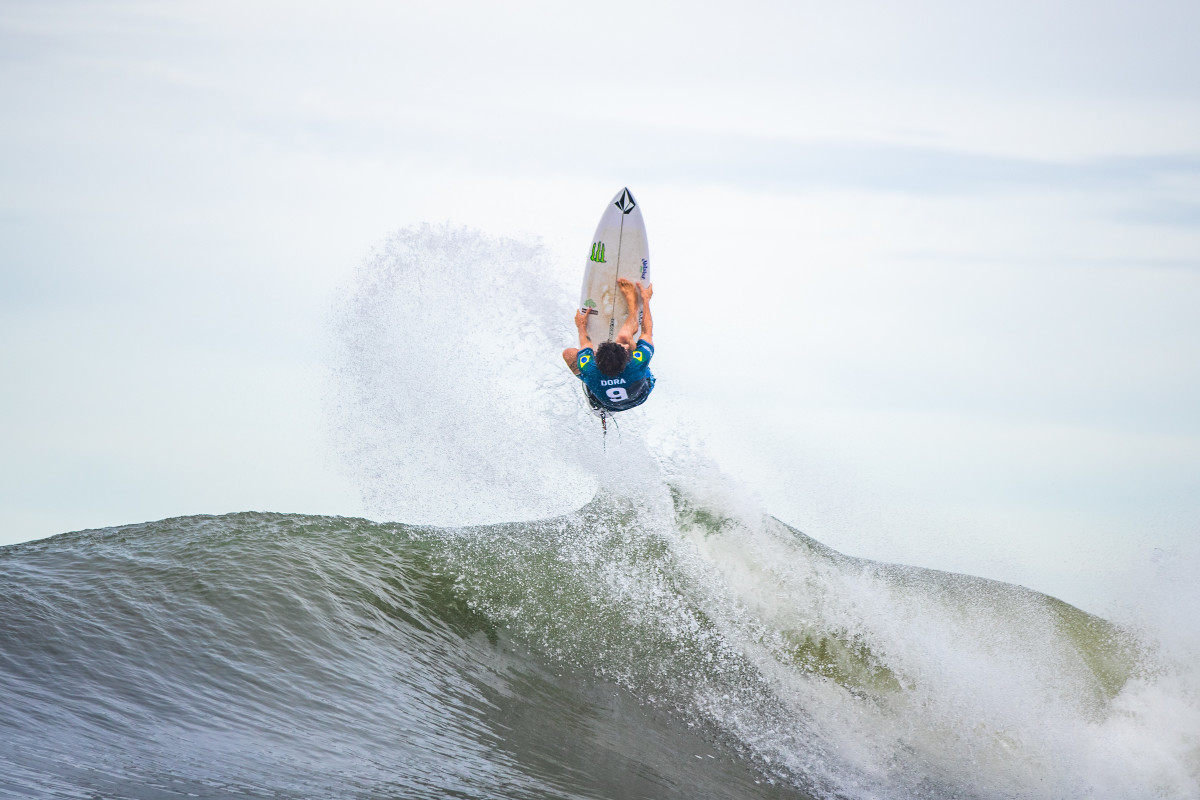
Aaron Hughes/WSL
When he’s on, Yago can be the most creative surfer on tour. The only limits to where his body and board can go is his imagination, calling to mind all of Brazil’s great traditions in body movement – the Jinga, capoeira, and the Brazilian football teams of the early naughties – with his radical mix of dance, acrobatics, finesse, and, above all, rhythm.
He blew minds right from the jump in El Salvador. Scintillating, coiled-up snaps and whips in the bowl, with peerless positioning and timing, characterized his rail game. But he’d also dug deep into his kitbag of aerials, producing one of the only functional backside varials ever seen in a contest; a move in which the surfer launches a backside air, spins the board 180 degrees under their feet with their hand, land going backwards riding switch, before doing another shuvit to get the board and his stance back to normal, while at the same unlooping his feet from his legrope, then ripping off a couple more turns. As technical as it gets, in other words.
The Brazilians know better than anyone what it means for Yago to find his feet like this. Medina’s visible shock on the broadcast was a harbinger of what was to come and Medina knew it.
Yago took up where he left off in their semi. On his first wave – a nothing insider – he whipped a couple of vicious snaps in the pocket before launching into a massive off-axis full rotation air reverse into the flats, sticking it on the bone-dry bricks, for an 8.33. You could see Medina’s head watching on from out the back as Yago rotated through the air. He was dying inside.
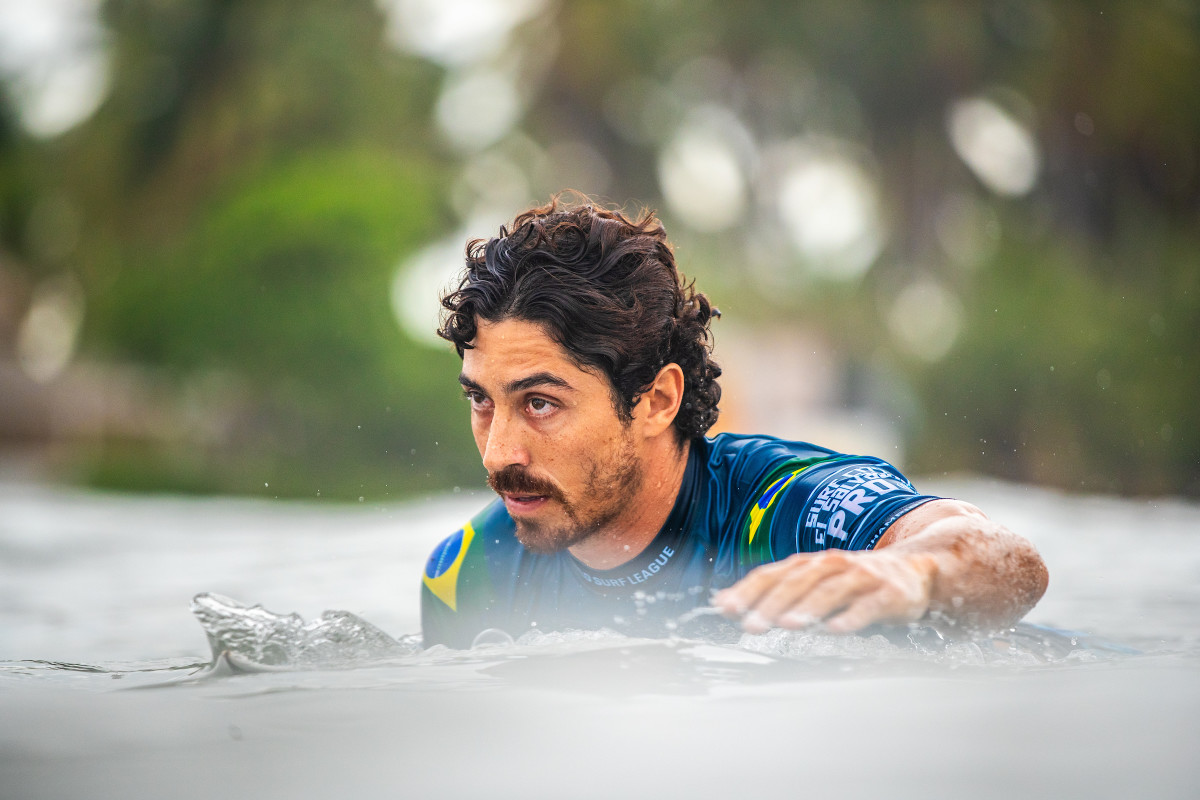
Aaron Hughes/WSL
Confidence is a hell of a drug and its effects are more visible in surfing than almost any other arena, where you see it show up not just in performance but in a surfer’s ability to read the lineup and get the best of the conditions. Under immense pressure from Yago, Medina showed signs of panic, trying to replicate Yago’s strategy of big aerials on insiders, only to lose the handle on his first attempt. Where Yago was fitting his aerials into a flowing repertoire of manvouers, Medina was ignoring waves with scoring potential, taking off on anything that moves and rocketing down the line searching for ramps. It’s a strategy he often lapses into when he’s behind and it never looks convincing. More a case of throwing shit at the wall and seeing what sticks, meanwhile, risking serious injury. The more he falls, the more he feverishly scours the lineup, catching anything that moves and hucking low percentage punt after low percentage punt, generally to no avail. The more Medina failed, the more Yago grew in stature. Like the lobster that reaches full wingspan after banishing his competitors, Yago’s central nervous system started poppin,’ lockin,’ beboppin’ and scatting all over the place the more he sensed the ascendancy. He ripped off a couple of severe, down-the-line hooks before finishing with a buttery varial on the closeout for a 6.67. Then the piece de resistance, one of the moves of the year so far: an ultra-corked, off-axis, backside full rotation Indy for a 9.33 and a comprehensive win over Medina.
Whatever Yago was doing, John John Florence, was doing it plus some, as he carved a swathe through the other side of the draw. Surfing frontside, the savagery he was unleashing on the wrapping bowls of Punta Roca called to mind a primed Long John Daly ripping One Woods up the guts of his local driving range. Florence opened his account against Crosby Colapinto in the quarters with a high velocity frontside-grab air reverse, straight into a snap, and three signature John-jams in the pocket for an 8.00. Under a ton of pressure, and up against the No. 1 surfer in the world in the best form he’s found in years, Crosby struggled to find an answer. When John backs up the 8 minutes later with a 7.17 under Crosby’s priority, with a series of jabs, hacks and a closeout air reverse, it was game over.
As it was for Yago, the quarters were just a warm-up for John. Against South African pointbreak specialist Matthew Mcgillivray, John loosened up with a 6.17 for a huge fins-out snap in the pocket, straight into a hook, before rocketing down the line into a signature John-wrap. Then came the pain. Using priority on a perfectly tapered wave, John flew down the line into a giant full rotation alley oop, landed as clean as possible, straight into a signature gouge, followed by two massive snaps for a score that could been 20 out of ten though only received unanimous tens across the board from the panel.
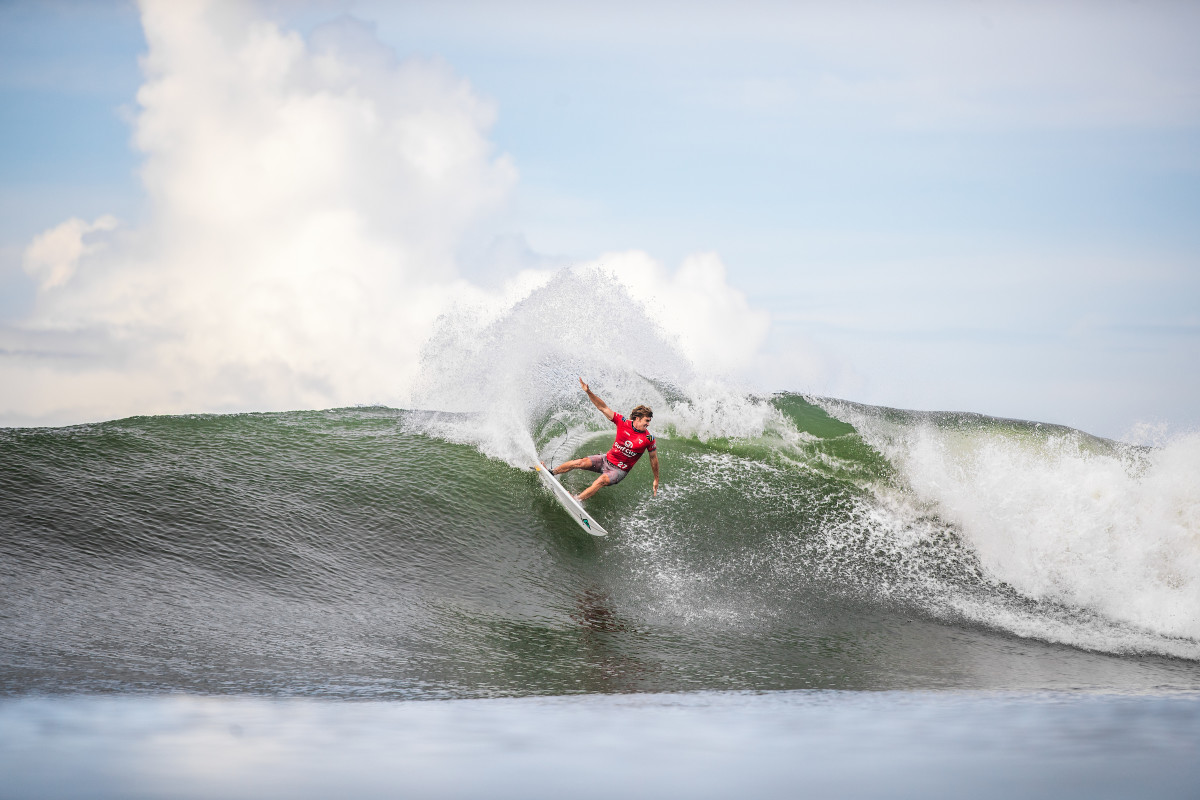
Aaron Hughes/WSL
That demolition job set up a final no one knew they needed so bad: John vs. Yago in glassy, groomed, four-to-six foot conditions. John once again got off to a flyer, destroying the coping with that snap before winding up and launching another huge aerial, covering serious lateral distance with an off axis frontside-grab air reverse for an 8.5.
When he plied another flurry of hacks, snaps, and a cute end section air reverse to an insider for a 7.83 and a massive lead of 16.33 to 1.3, it was time for Yago to feel some of the heat he’d been throwing around the contest site. It showed too when Yago launched an ambitious air reverse, only for the board to flip and Yago to land on his fins. What could have been a gruesome injury resulted only in a broken board and a quick change before Yago launched straight into a stunning offensive.
Related: Is This John Florence’s Year to Take the World Title?
The kind of form Yago was in doesn’t just evaporate over one wave. The very next wave, he ripped off a series of savage snaps and whips in the bowl, all perfectly timed with sublime technique and style, before sticking another off axis air reverse on the closeout. It could have been a ten – Yago certainly thought so with his claim – but it came in just under at a 9.77.
Needing only a 6.56 to take the final in the dying stages, Yago paid a big price for his costly errors to open the heat when the ocean failed to provide another serious scoring opportunity. John Florence took the win, locking in his place at the WSL Finals for the first time, with two events and the 2024 Olympics still remaining.
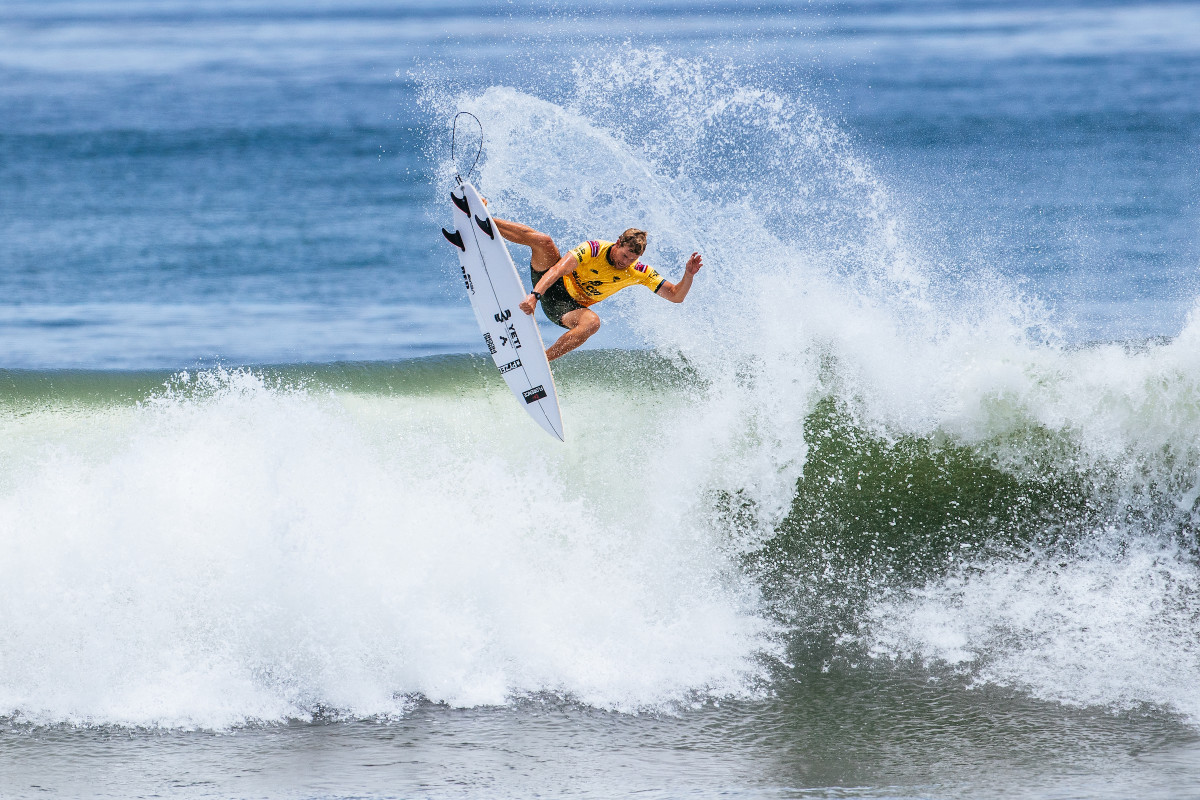
Aaron Hughes/WSL
On the women’s side, Gabriela Bryan sought to emulate her male Hawaiian counterpart with a similar brand of savage hacks and snaps. Her powerful form matched the long-period, right-point energy on tap and she went to work in her semi-final against Caity Simmers, with a crazy vertical attack on the coping for the bulk of her opening seven point ride. The critical positioning of her turns, done with conviction and down-the-line flow, threatened to overwhelm Simmers’ lithe frame and more technical approach. But the Californian’s progressive stylings kept her within striking distance, setting up a remarkable buzzer beater finish. Requiring a 6.71 on the hooter for the win, Simmers found an inside runner, stuck a pair of inconsequential down the line snaps and floats, then launched a frontside finner to nose pick – reminiscent of Taj Burrow in his prime. It might have been the turn of the year so far and elicited howls from commentators and fans alike. But the judges only gave her a 6.3, just short of the requirement. Simmers semifinal loss still sees her leave El Salvador with the yellow jersey.
As good as Gabriela Bryan was looking throughout the event, overcoming Caroline Marks and what is surely the best backside attack in the history of women’s surfing was going to take something very special. Bryan’s strategy in the final was clear: surf to her strengths, get her feet in the wax early, and put the blowtorch under Marks to see if she could unsettle a backhand approach as consistent as a swinging pendulum.
Bryan got the first part of it right, opening her account with a savage hack on a foamy bowl, only for the wave to fizzle and not offer a second section. It gave Marks priority, which she used moments later on a perfectly tapered point break wave and garnered a 7.00.
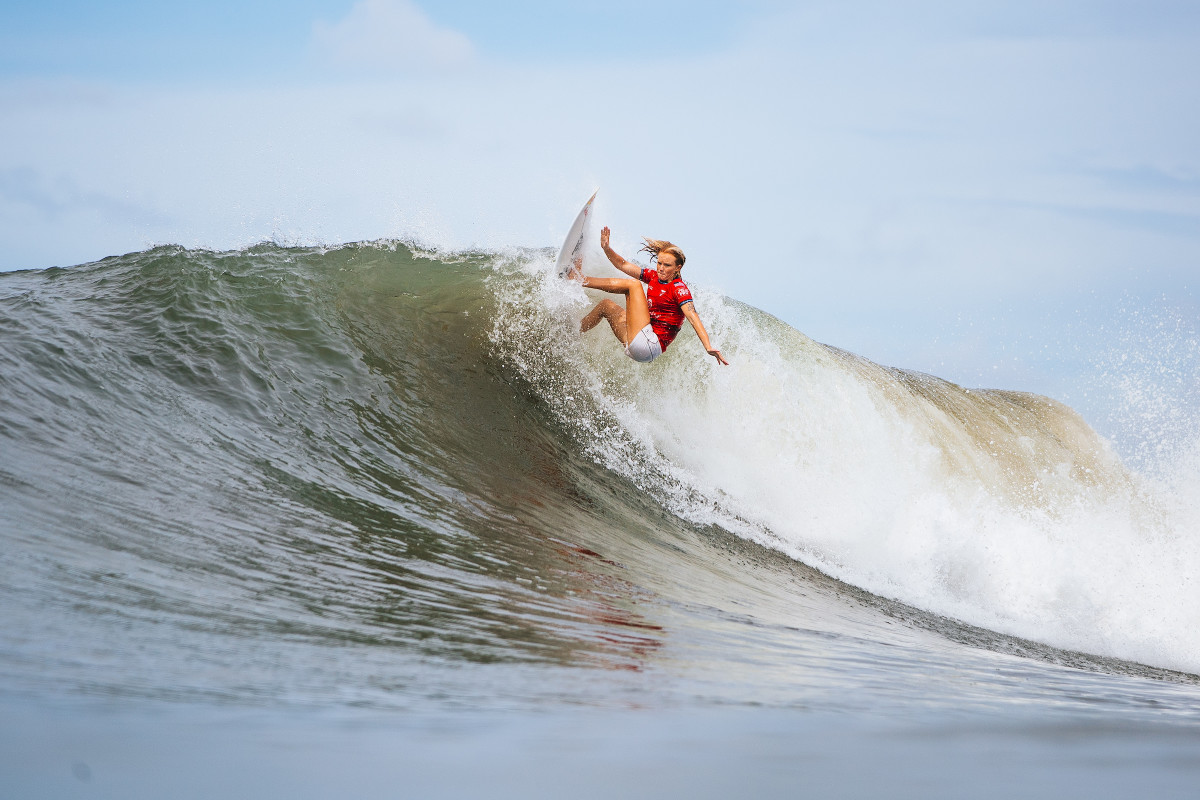
Aaron Hughes/WSL
Bryan answered again with a huge opening carve, only to come brutally unstuck trying to jam a turn on a cascading lip line. Marks continued her stranglehold on the final with a 7.4.
In conditions as clean and as suited to Bryan’s frontside power game as this, you knew she was going to find her mark at some point and it came (in the form of a 6.93) with 11 minutes on the clock. But Marks again answered immediately with a set wave, taking a high line into a deep bottom turn, before ripping off a lightning snap straight into a top turn, and a final vertical closeout hit for a 7.40.
With that score yet to drop, Bryan answered with a frothy one, carving through the chop to jam a super critical snap into a falling lip, straight into a cutback, and a final closeout hit on the foam for the highest wave of the heat – a 7.53. If Marks had not bettered her total with the wave just previous, it would have been enough to give Bryan victory. Instead Marks claimed her second win in a row at The El Salvador Pro, moving her three spots up the rankings into second, as we head to Rio.
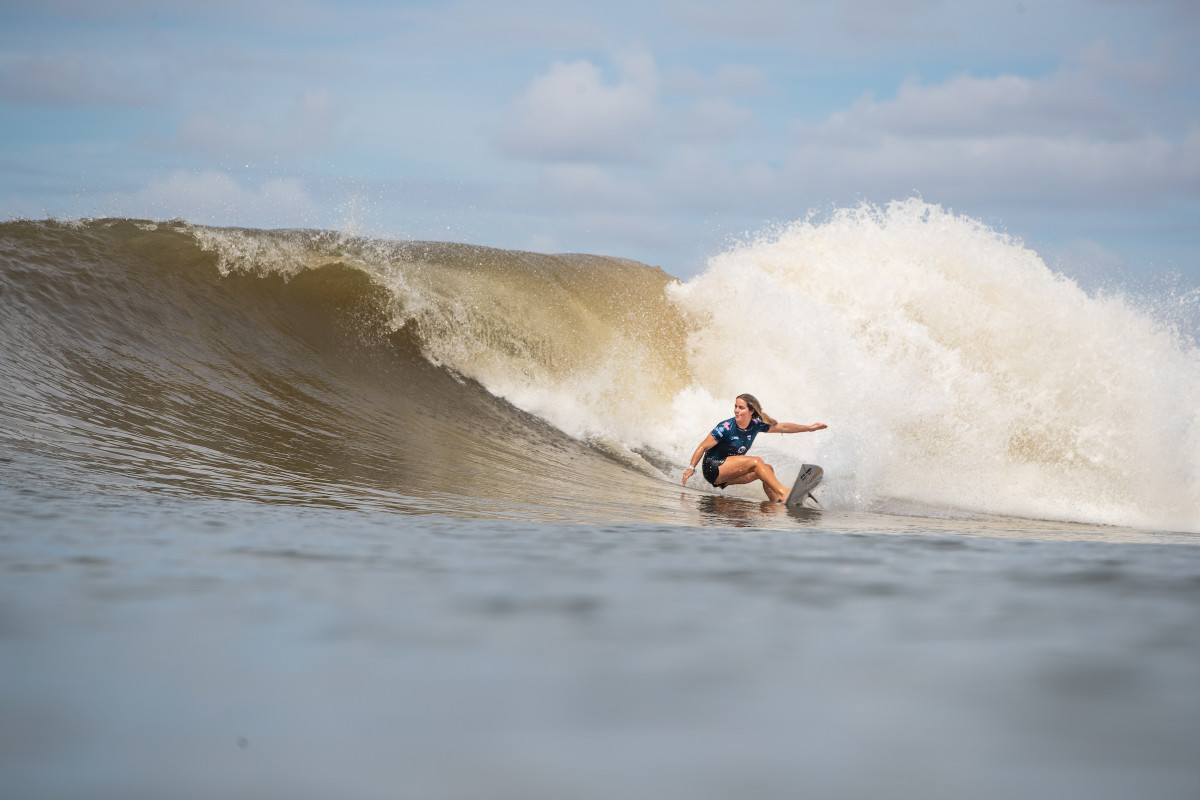
Aaron Hughes/WSL

